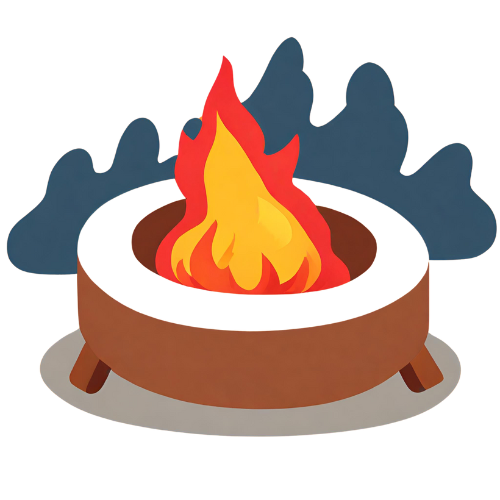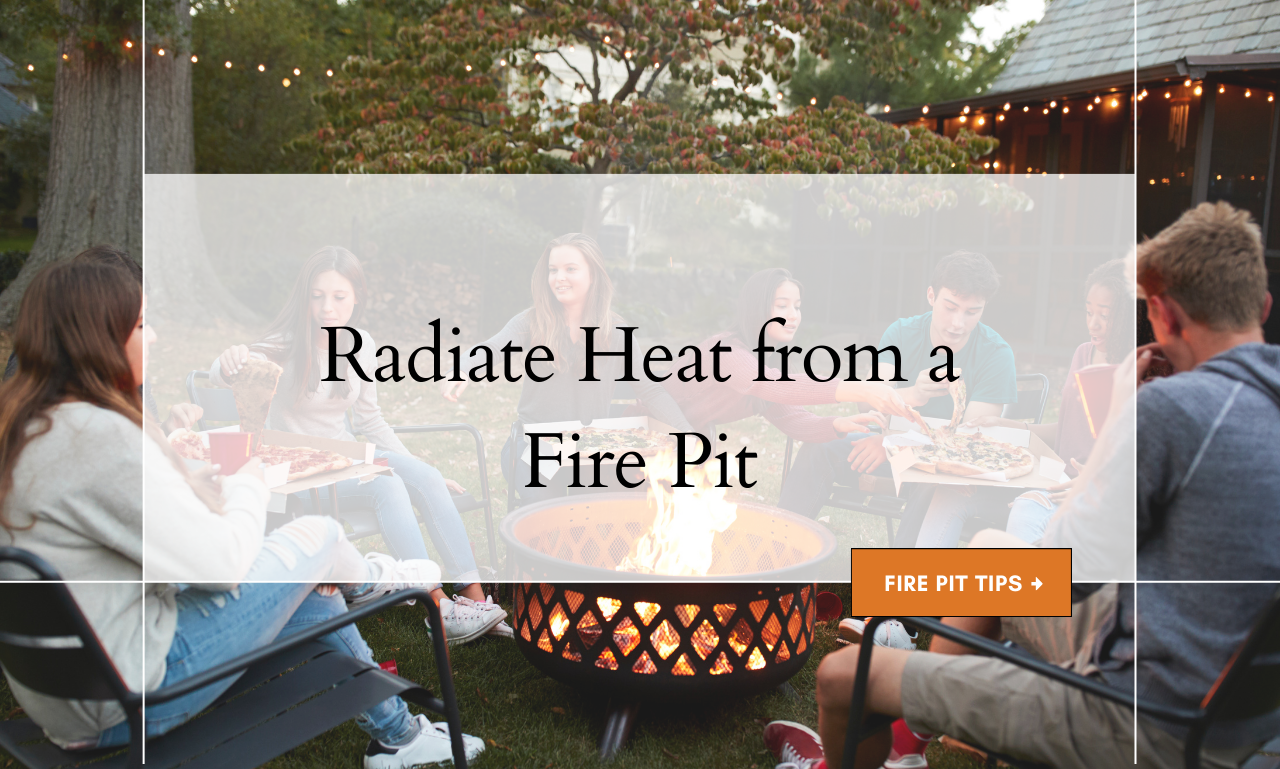A fire pit is a bowl or space outside where you can make a fire, just like a campfire, right in your backyard. It’s a cozy spot for friends and family to gather, roast marshmallows, or just chat and relax under the stars. Your fire pit can be made of metal, which heats up and cools down quickly, or stone, which holds heat for a longer time. It’s like the heart of your outdoor space, where memories are made and stories are shared.
To keep you and your guests toasty around your fire pit, you have to manage how it gives off heat. You do this by setting it up in a good place, using the right kind of wood, and sometimes adding things to help bounce the heat back at you.

Step 1: Choosing Your Fire Pit
You want a fire pit that keeps you warm and lasts long. Metal fire pits are good for this because they spread heat well. Look for a pit with a thick metal part around it, which means it won’t easily bend or wear out. Thick metal is like heavy-duty jeans; they don’t rip easily. It’s important to find a metal fire pit that keeps its shape after many uses. This type will stand up to the heat over and over without damage.
Step 2: Placing Your Fire Pit
Place your fire pit in a spot where you and your friends like to hang out, but not too close to trees or your house. Like setting up a camp, you want an open area where nothing blocks the heat. A good spot means more warmth for everyone and a better shared experience. Just remember to think safety first, then the view, and then the heat will make sure you have the best time using your fire pit.
Step 3: Reflecting Heat
To make your fire pit warmer, use shiny materials around it. These materials send the heat back to you, just like a light-colored stone or a metal sheet can. It’s similar to wearing a white shirt in the sun to stay cool because it sends the sun’s heat away from you. Using things that reflect heat means more warmth without needing a bigger fire or more wood.
Step 4: Using a Fire Pit Screen
A fire pit screen is a cover that keeps sparks from flying out and the wind from blowing too hard on your fire. It makes sure your fire stays warm and safe. It also stops too much wind from coming in, which can make the fire too cold or blow smoke toward you. A screen helps you enjoy the fire without worry.
Step 5: Building a Windbreak
A windbreak is a wall for the wind made from logs or big rocks. It keeps your fire from being too windy and helps it burn evenly. This way, your fire stays strong and warm for everyone around it. It’s not just for comfort; it’s for keeping the fire in good shape too.
Step 6: Choosing the Right Wood
For a hot fire, use wood that is dry. Wet wood makes too much smoke and doesn’t burn well. Dry wood lights quickly and burns hot, like store-bought kindling. It’s best to use wood that has been sitting dry for a while, which burns cleaner and hotter, giving you a better fire.
Step 7: Cleaning Up Your Fire Pit
Before lighting your fire, take out old ashes. This is like cleaning your grill for better cooking. Removing ashes lets air flow, which helps the fire burn brighter. A clean pit starts easier and burns hotter, and it’s also less likely to cause any trouble.
Step 8: Adding Some Rocks
Adding rocks to your fire pit helps keep the heat longer after the fire is down. Rocks, especially lava rocks, are great at holding heat. They work like heat bottles for your bed, keeping you warm even when the fire isn’t burning anymore. A layer of these rocks will give you extra warmth for a longer time.
Step 9: Choosing a Sunny Spot for Your Pit
A sunny place is best for your fire pit. Even without a fire, the sun will warm it up. This makes starting your next fire easier and keeps the place warm even when you’re not using the pit. A sunny spot means a naturally cozy place for you.
Step 10: Getting a Fire Pit with a Chimney
A fire pit with a chimney is good because it moves heat better around your sitting area. Like a kitchen vent, a chimney takes smoke up and away, making the area less smoky and more evenly heated. It keeps the fire stable and the smoke away from you, which makes for a more pleasant time around the fire.
Conclusion
A fire pit is like a big bowl for a fire that makes your outdoor hangouts more special with light and heat. This article tells you how to get the most warmth from your fire pit so you and your friends can stay snug.
To spread a lot of heat, go for a metal fire pit right in the middle of your space. Metal gets hot fast and sends warmth all around. Put shiny things like metal shields or some light rocks around your fire pit to throw the warmth back at you.
Keep old ashes out of your fire pit so new fires can breathe and burn better. Putting rocks or lava rocks in your fire pit is smart too; they soak up heat and keep giving it off even when the fire calms down. If you can, put your fire pit where the sun can shine on it, because the sun’s rays will add to the heat.


1 thought on “How to Radiate Heat from a Fire Pit: A Comprehensive Guide”